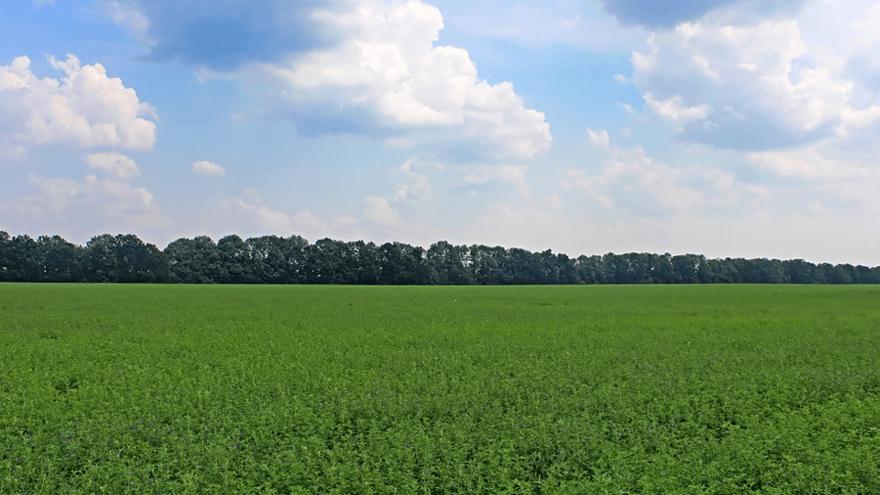
Managing weed pressure in lucerne this winter
Achieving and maintaining high quality and high yielding lucerne requires good grazing and cutting management, targeted plant nutrition and effective weed management.
Lucerne is dormant mid-winter providing a great time to apply vigorous weed control. The crop can last many years if managed well through weed control, mowing, grazing and spraying. A lucerne crop declines when the battle with weeds, especially perennial ones, is lost resulting in a marked reduction in production and palatability.
Over time, fertility of the paddock can drop along with its pH, so it is important to apply nutrition throughout the season, particularly potassium, if the crop is cut and removed. Lucerne desires a pH of above 6 and production drops significantly when pH is below 5.5, so I recommend applying lime annually. Keeping the crop's nutrition maintained allows vigorous growth during the growing period and enables aggressive competition with weeds, helping prevent them from establishing.
Weed control in lucerne can be divided into establishing crop (less than 12 months old) and crops in the mature phase (older than 12 months). When the crop is establishing, it is critical to obtain as close to 100 percent weed control as possible. If weeds emerge at the same time as lucerne seedings, they will compete and weeds will reduce the density of the establishing crop, impacting on its potential yield.
Herbicide options in an establishing crop are different from a mature crop. Herbicides are always more effective when weeds are small, so applying a spray containing 2,4-DB or Imazethapyr, depending on the target weed, at the second trifoliate provides an emerging lucerne crop with the best start. Flumetsulam containing herbicides can also be applied after the crop has achieved four trifoliate leaves.
Lucerne’s dormancy phase is the most effective time to control weeds in mature crops over 12 months old, as it reduces the damage of herbicides on the crop itself. Identifying weeds and their numbers through paddock monitoring during late autumn helps in the selection of an appropriate herbicide. Mature lucerne weed control requires a mixture of a contact burndown spray (containing paraquat) and another residual herbicide (containing atrazine), browning down weeds and leaving a residual herbicide layer on the surface of the soil to kill emerging weeds. This can also have the effect of removing older leaves that are a perfect environment for disease.
Keep an eye on weeds during spring and autumn in established crops as there are selective herbicide options on specific weeds that can be applied throughout the year. The use of a mower is still a great form of weed control as mowing can remove annual weeds before they set seed.
To discuss what herbicides would be most effective on your dormant lucerne crops, contact your local PGG Wrightson Technical Field Representative.


